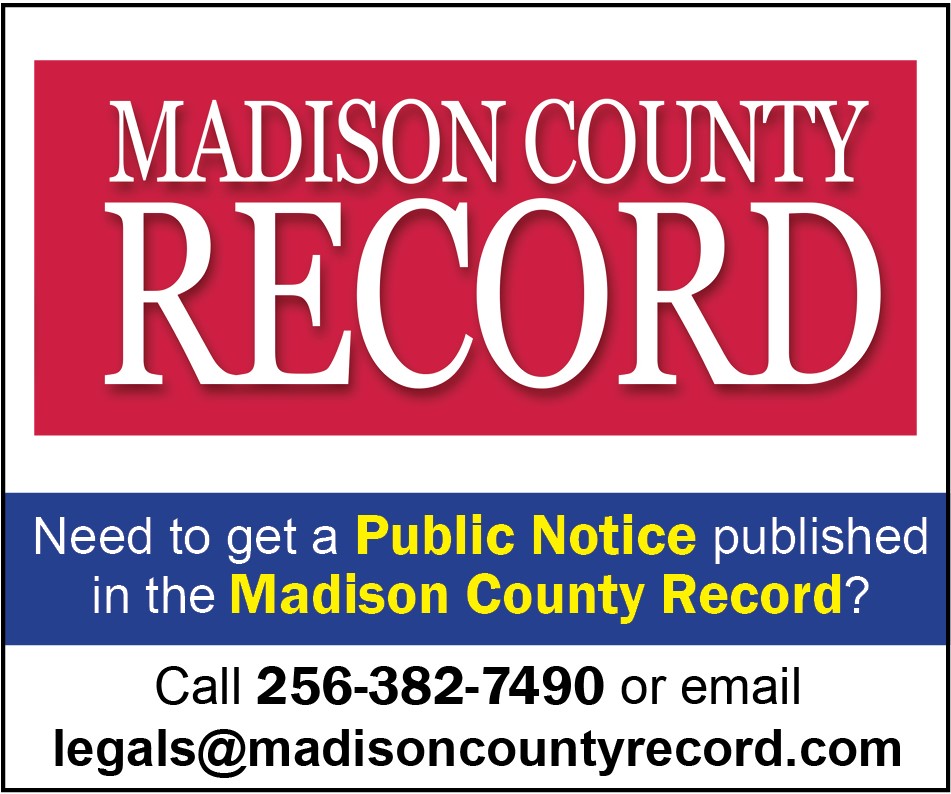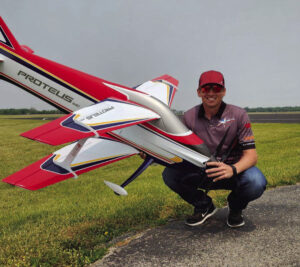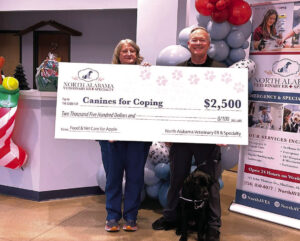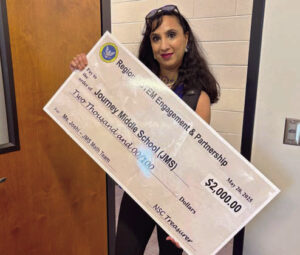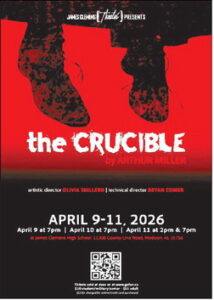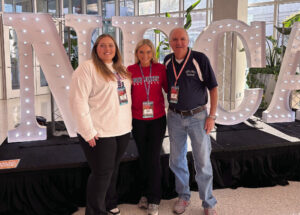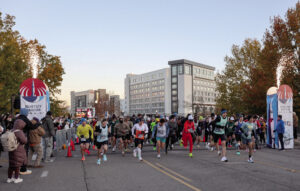HONORING OUR PATRIOTS
Benny Hannah and a group of volunteers have been honoring the memory of local patriots by bringing cemeteries back to life
Benny Hannah, through the Sons of the American Revolution, has been Hannah is pictured above working to restore the grave site of an American Revolution Patriot and his wife at the historic cemetery on Saturday.
MADISON – Benny Hannah does the impossible. He brings cemeteries back to life.
He raises old, forgotten cemeteries from the dead and with them, the memories of those buried there.
Hannah does his work through his membership to the Sons of the American Revolution and specifically seeks to honor and immortalize Revolutionary War veterans buried in North Alabama cemeteries.
Hannah has been a member of the Tennessee Valley Chapter Sons of the American Revolution for more than a decade since 2013. He joined after his brother in West Virginia researched their family’s genealogy and found three or four ancestors connected to the Revolutionary War. After his brother joined the organization in West Virginia, Hannah soon followed suit in Alabama.
During his time with the organization, he has served in a number of leadership roles including secretary, Vice President, and President from 2021-2022 for the Tennessee Valley Chapter. He also served as secretary at the state level, and currently, he serves as Vice President for the state. He is expected to serve as state president starting in the spring of next year.
His volunteer work with the SAR began in the local schools, teaching history to the younger generations.
“I was first of all encouraged by a lot of their programs in schools supporting history and patriotism and education, which is our core principles of what we work with the SAR and especially getting kids back to learning about history again,” said Hannah.
Today, he continues his work to pass on history with his cemetery restoration efforts.
“During my presidency of the chapter is when I really got involved in wanting to do these grave markings and recognizing our patriots who participated in the Revolutionary War. We have a lot who flowed through this area. Some stayed and passed away here. Some went on to Arkansas [and] Texas,” said Hannah.
His interest in cemetery work began when he encountered SAR members from New York who were doing cemetery restoration and securing historical markers for Revolutionary War veterans in their state. Hannah saw it as a great project to bring to the many historic cemeteries in Alabama. His work now includes restoring entire cemeteries and erecting historical markers for Revolutionary War veterans buried there.
Hannah works with a group of about forty volunteers to clear debris from overgrown cemeteries, restore and clean headstones, and maintain the sites. The work is not always easy. It is often physically demanding, from dodging brush and stumps to lifting heavy headstones and box tombs.
“Actually, my wife took an old pair of blue jeans and cut the legs off and put elastic in it to go over my arms because I kept coming home with all these cuts and bruises and bleeding from my arms from the briars, and she says, ‘You got to do a little better job protecting yourself,’” laughed Hannah.
Many of the cemeteries he works on are hundreds of years old and former family cemeteries or defunct church cemeteries that have been abandoned and fallen into disrepair. With the population growth in North Alabama currently, many cemeteries are endangered by the encroachment of new developments as was the case with one cemetery in Meridianville that was unknowingly damaged by construction crews of a new subdivision.
Hannah and his volunteers use what they have to clean up these historic cemeteries and when their own axes and strength aren’t enough, Hannah has found help in local leaders, as in the case of the Crawford-Ryan cemetery in Morgan County. When one particular tree was too large for Hannah and his volunteers to handle, state Senator Arthur Orr secured them a $1,500 grant to contract a tree removal company.
Accessing cemeteries is another challenge Hannah faces, as a cemetery he recently worked on in Decatur demonstrates. The positioning of the cemetery between railroad tracks and a defunct foundry along with the padlocking of the gates to the cemetery made it difficult for Hannah and the public to regularly access.
Locating these cemeteries where Revolutionary War veterans are buried in the first place is challenge in and of itself, and then confirming that a patriot is buried there can be another challenge.
The Tennessee Valley Chapter Sons of the American Revolution recently gathered at the Russell Cemetery in Somerville to unveil the new Pomeroy Patriot Burials Historic Roadside marker. The marker identifies Revolutionary War Patriot Electious Thompson, who is buried at the cemetery.
Hannah and the SAR partners with The William G. Pomeroy Foundation who supplies the $1,500-historical markers for the patriots, but the Pomeroy Foundation has a few requirements in order to acquire a marker. One of those is confirmation either through records or an original headstone that the patriot is in fact buried there.
With many cemeteries in bad shape with broken and missing headstones and records sometimes scarce, confirming a veteran’s burial can be difficult, but Hannah has another group of volunteers dedicated to researching for confirming evidence.
Once the veteran is confirmed and the cemetery restored, the historical marker is erected and then unveiled in an official ceremony with the SAR color guard and often DAR representatives. Hannah even reaches out to descendants of the patriots and some make trips from all over the country to attend the ceremony and visit the gravesite.
The Gray Cemetery right here in Madison is one of Hannah’s current projects and where a celebratory ceremony will soon be taking place. The Gray Cemetery is located off of Balch Road near the Gillespie Road intersection. It was formerly used by the Cumberland Presbyterian Church that sat on the property until the late 1920s.
So far one patriot, John Gray, has been confirmed to be buried there, and Hannah suspects there could be another two patriots.
The cemetery, which is one of the largest Hannah has worked on at almost two acres, has been three years’ work so far, and Hannah has partnered with local historian and volunteer cemetery restorer John Rankin to clean, restore, and maintain the cemetery.
The Gray cemetery presents its own challenges to restoration. To start, it is boxed in on all sides by a neighborhood, a storage unit facility, and a wooded area, making it difficult for the public to access and for Hannah and his team to remove the cleared debris from the cemetery.
“This particular cemetery has been a real bear because first of all, typically, when we’re cleaning a cemetery, we’ve got some place that we can drag all the brush and the trees and the bushes and the briars but this particular cemetery is all boxed in except for the south end which is opened up into kind of a swampy area. So, we started making all these piles of debris within the cemetery,” Hannah explained.
The south end of the grounds also contains a former dirt road that was once used by wagons to bring coffins to the church and cemetery. The road now forms a deep gulley that cuts across the land, presenting another potential danger and obstacle to easy access.
Public access is another one of the Pomeroy Foundation’s criteria in order to supply a historical marker, and thus, a major concern of Hannah’s when renovating cemeteries where Revolutionary War veterans are buried.
Fortunately, Hannah is working on solutions for the Gray cemetery. The city is currently building a paved road through the wooded area on the far south end of the cemetery to access their nearby water treatment plant but the road will also double as a public access point to the cemetery and a small parking lot planned for the road will additionally make public access even easier. As for the former road and current gully, a local Boy Scout plans to earn his Eagle Scout badge by building a bridge for foot traffic to cross the gap on the way from the parking area to the cemetery.
Madison Historian John Rankin and volunteer Karen Thacker discussing what task is up next in cleaning out the old Gray Cemetery, which was lost for decades in the woods off Balch Road. Rankin helped rediscover the graves over 30 years ago.
Restoration of the Gray Cemetery is ongoing, and Hannah plans to map the cemetery and register it with the Alabama Cemetery Preservation Alliance. He also plans to apply for a historical marker for the cemetery and hold an SAR ceremony for the patriot, John Gray, there as soon as the city’s road is finished and public access has been established.
“Basically, when we find a patriot in the cemetery, we’re not going to just clean up the area around where the patriot is. If we’re going to do it, we’re going to do it right. We’ll clean up the whole cemetery,” explained Hannah.
So far, Hannah has acquired seven historical markers for the state of Alabama.
For his efforts, the SAR’s sister organization, the DAR, has presented Hannah with three awards including the America 250 medal and the Hannah White Arnett Medal, presented by the regent of state.
The work is important to him because of the significance of the sacrifices these early patriots made to found our country. He recalls being hit by the importance of this work upon finding a stone in one cemetery he was clearing that read, ‘Lost but not forgotten’.
“That really just broke my heart to see something like that and knowing that we have so many people in these early days who sacrificed so much and especially in taking a stand for our country and being able to start and develop such a nation as we have today. I think it’s only fair that we search out those individuals and give them some of the honor that they deserve,” recalled Hannah.
He plans to keep going for a long time: “I’ve pretty much just set a personal goal that as long as I’m able to get out there and clean up these cemeteries, rebuild their headstones and place markers on their graves and have ceremonies to recognize these folks, I’m going to do it as long as I can, as long as I’m able.”
The Tennessee Valley Chapter is one of the leading chapters in the country in cemetery restoration. Hannah hopes to get other chapters interested in doing the same thing in their areas. He also hopes to cover all the veterans in North Alabama and then bring more cemeteries back to life throughout the entire state.
Hannah is always looking for more volunteers to join him and posts regular updates on his projects on Facebook.


